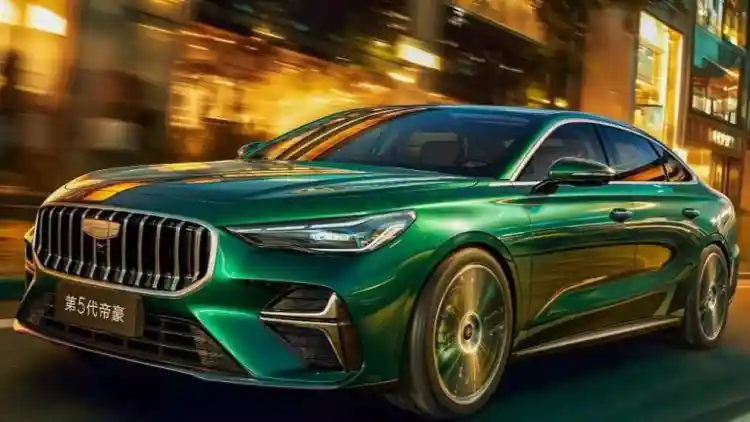- Futuristic Exterior Design with Practical Touches
- Smart and Luxurious Interior
- Advanced Hybrid Powertrain and Dynamic Performance
- Market Positioning and Competition
Geely is preparing to launch its new model, the Galaxy Starship 9, marking a significant leap in China’s luxury plug-in hybrid SUV market. This vehicle represents the latest addition to Geely’s Galaxy sub-brand, aiming to deliver a harmonious blend of futuristic design, dynamic performance, and advanced smart technologies.
Futuristic Exterior Design with Practical Touches
The Starship 9’s design draws inspiration from the concept car that won the 2024 Red Dot Design Award, adapted with practical changes for mass production. It retains sleek, modern lines and a sloping roof but replaces the concept’s rear-hinged “suicide” doors and camera-based side mirrors with conventional doors and mirrors to enhance everyday usability and reliability. The front fascia features a wide grille and slim air intakes, complemented by a full-width LED light bar that emphasizes a strong road presence.
On the sides, flush door handles improve aerodynamics by reducing drag. At the rear, connected LED taillights and an integrated spoiler add a sporty flair. A roof-mounted LiDAR unit signals readiness for semi-autonomous driving capabilities, while dual ports for charging and refueling confirm its plug-in hybrid electric vehicle (PHEV) status.
Smart and Luxurious Interior
Inside, the Starship 9 blends luxury with cutting-edge technology. It offers three rows of seating accommodating six or seven passengers, with electrically adjustable seats and voice command support to enhance comfort and convenience. Premium materials such as high-quality fabric, wood trims, and chrome accents create an upscale atmosphere.
The dashboard is dominated by a panoramic digital display spanning its width, integrating digital instrumentation, infotainment, and media controls. Additional features include an intelligent voice assistant, independent rear climate control, and wireless charging pads, all designed to meet the needs of modern occupants.
Advanced Hybrid Powertrain and Dynamic Performance
Built on Geely’s Global Intelligent Electric Architecture (GEA), the Starship 9 is equipped with the updated Leishen 2.0 plug-in hybrid system. This combines a 1.5-liter gasoline engine with an 11-in-1 integrated electric drive unit, delivering an optimal balance of power and efficiency. The vehicle supports multiple driving modes, including full electric for urban use and hybrid for longer journeys, offering sporty performance alongside low fuel consumption.
The SUV also features Geely’s “Qianli Haohan” driver assistance system, which integrates LiDAR and millimeter-wave radar sensors. This system enables advanced functions such as electronic braking, rear-wheel steering, and adaptive suspension. Based on its hardware, the Starship 9 is expected to support Level 2+ or even Level 3 autonomous driving in certain scenarios.
Market Positioning and Competition
The Starship 9 sits atop the Galaxy sub-brand lineup but is priced below Geely’s premium Lynk & Co and Zeekr models. Its expected price range of 200,000 to 300,000 yuan (approximately $27,500 to $41,260) positions it competitively against rivals like the Changan Deepal S09, while offering a more affordable alternative to luxury models such as the Li Auto L9.
Geely plans to officially unveil the Starship 9 later in May 2025, with deliveries slated to begin in the third quarter of the year. It will join the expanding Galaxy family, which already includes models like the E5 and Starship 7. The Galaxy series has been instrumental in Geely’s recent growth, with deliveries increasing by 280% in the first quarter of 2025.
The Geely Galaxy Starship 9 combines bold modern design, advanced smart technologies, and an efficient hybrid powertrain to offer a premium SUV experience tailored for families and tech enthusiasts alike. With competitive pricing and leading-edge features, the Starship 9 is poised to redefine standards for large plug-in hybrid SUVs in China and beyond.













